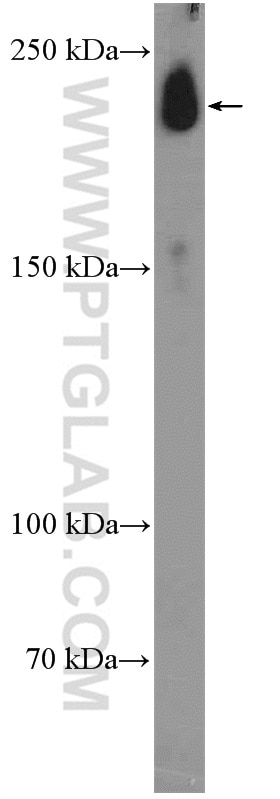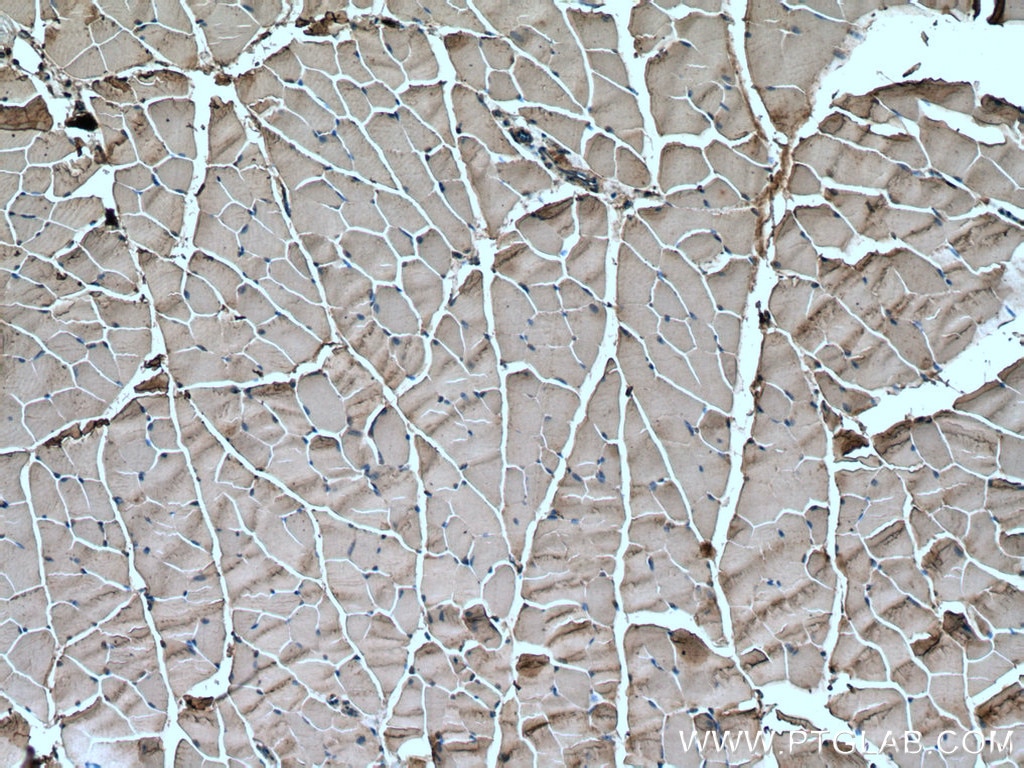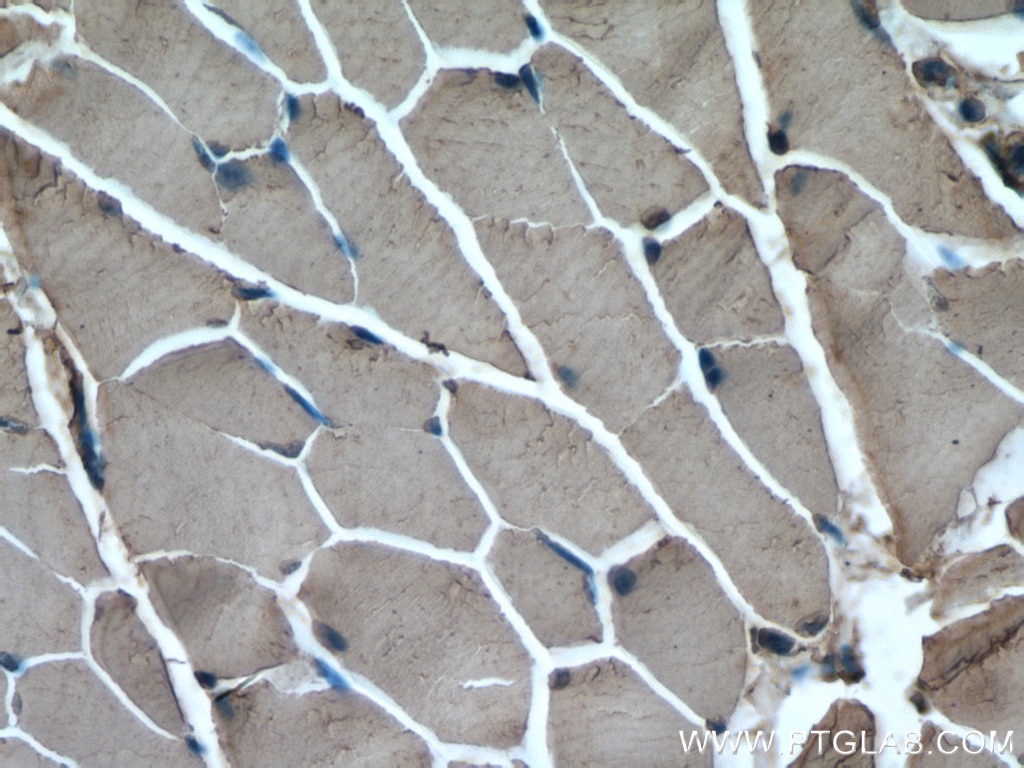Tested Applications
| Positive WB detected in | mouse heart tissue |
| Positive IHC detected in | mouse skeletal muscle tissue Note: suggested antigen retrieval with TE buffer pH 9.0; (*) Alternatively, antigen retrieval may be performed with citrate buffer pH 6.0 |
Recommended dilution
| Application | Dilution |
|---|---|
| Western Blot (WB) | WB : 1:500-1:1000 |
| Immunohistochemistry (IHC) | IHC : 1:50-1:500 |
| It is recommended that this reagent should be titrated in each testing system to obtain optimal results. | |
| Sample-dependent, Check data in validation data gallery. | |
Published Applications
| WB | See 11 publications below |
| IHC | See 1 publications below |
| IF | See 2 publications below |
Product Information
23016-1-AP targets Nav1.5 in WB, IHC, IF, ELISA applications and shows reactivity with human, mouse samples.
| Tested Reactivity | human, mouse |
| Cited Reactivity | human, mouse, rat |
| Host / Isotype | Rabbit / IgG |
| Class | Polyclonal |
| Type | Antibody |
| Immunogen |
CatNo: Ag19275 Product name: Recombinant human SCN5A protein Source: e coli.-derived, PET28a Tag: 6*His Domain: 422-714 aa of BC140813 Sequence: ATIAETEEKEKRFQEAMEMLKKEHEALTIRGVDTVSRSSLEMSPLAPVNSHERRSKRRKRMSSGTEECGEDRLPKSDSEDGPRAMNHLSLTRGLSRTSMKPRSSRGSIFTFRRRDLGSEADFADDENSTAGESESHRTSLLVPWPLRRTSAQGQPSPGTSAPGHALHGKKNSTVDCNGVVSLLGAGDPEATSPGSHLLRPVMLEHPPDTTTPSEEPGGPQMLTSQAPCVDGFEEPGARQRALSAVSVLTSALEELEESRHKCPPCWNRLAQRYLIWECCPLWMSIKQGVKLVV Predict reactive species |
| Full Name | sodium channel, voltage-gated, type V, alpha subunit |
| Calculated Molecular Weight | 2016 aa, 227 kDa |
| Observed Molecular Weight | 227 kDa |
| GenBank Accession Number | BC140813 |
| Gene Symbol | SCN5A |
| Gene ID (NCBI) | 6331 |
| RRID | AB_2879198 |
| Conjugate | Unconjugated |
| Form | Liquid |
| Purification Method | Antigen affinity purification |
| UNIPROT ID | Q14524 |
| Storage Buffer | PBS with 0.02% sodium azide and 50% glycerol, pH 7.3. |
| Storage Conditions | Store at -20°C. Stable for one year after shipment. Aliquoting is unnecessary for -20oC storage. 20ul sizes contain 0.1% BSA. |
Background Information
Voltage-gated sodium channels are responsible for initiation and propagation of action potentials in the membranes of neurons and most electrically excitable cells (PMID: 10798388). These channels are composed of a large alpha subunit that forms the ion conduction pore and auxiliary beta subunits (PMID: 11486343). The alpha subunits form a gene family with at least 10 members. Nav1.5, encoded by the SCN5A gene in humans, is a pore forming alpha subunit of voltage-gated sodium channels. Nav1.5 is the principal Na+ channel isoform expressed in cardiomyocytes. Mutations in SCN5A gene have been linked to many cardiac electrical disorders, including the congenital and acquired long QT syndrome, Brugada syndrome, conduction slowing, sick sinus syndrome, atrial fibrillation, and dilated cardiomyopathy (PMID: 23123192).
Protocols
| Product Specific Protocols | |
|---|---|
| IHC protocol for Nav1.5 antibody 23016-1-AP | Download protocol |
| WB protocol for Nav1.5 antibody 23016-1-AP | Download protocol |
| Standard Protocols | |
|---|---|
| Click here to view our Standard Protocols |
Publications
| Species | Application | Title |
|---|---|---|
Cancer Lett Sialyltransferase ST3GAL4 confers osimertinib resistance and offers strategies to overcome resistance in non-small cell lung cancer | ||
Front Pharmacol Spider venom-derived peptide JZTX-14 prevents migration and invasion of breast cancer cells via inhibition of sodium channels | ||
Int Immunopharmacol Salidroside treatment decreases the susceptibility of atrial fibrillation in diabetic mice by reducing mTOR-STAT3-MCP-1 signaling and atrial inflammation | ||
Hum Mol Genet Mice lacking MBNL1 and MBNL2 exhibit sudden cardiac death and molecular signatures recapitulating myotonic dystrophy. | ||
Eur J Pharmacol Glucose fluctuations aggravated the late sodium current induced ventricular arrhythmias via the activation of ROS/CaMKII pathway | ||
Biochim Biophys Acta Mol Basis Dis Changes in ion channel expression and function associated with cardiac arrhythmogenic remodeling by Sorbs2. |
Reviews
The reviews below have been submitted by verified Proteintech customers who received an incentive for providing their feedback.
FH Udesh (Verified Customer) (01-19-2023) | Used at 1:500 dilution in 5% BSA and probed overnight at 4 degrees C. Upper membrane piece shows Nav1.5 bands close to 150 kD. Multiple bands seen probably due to BSA.
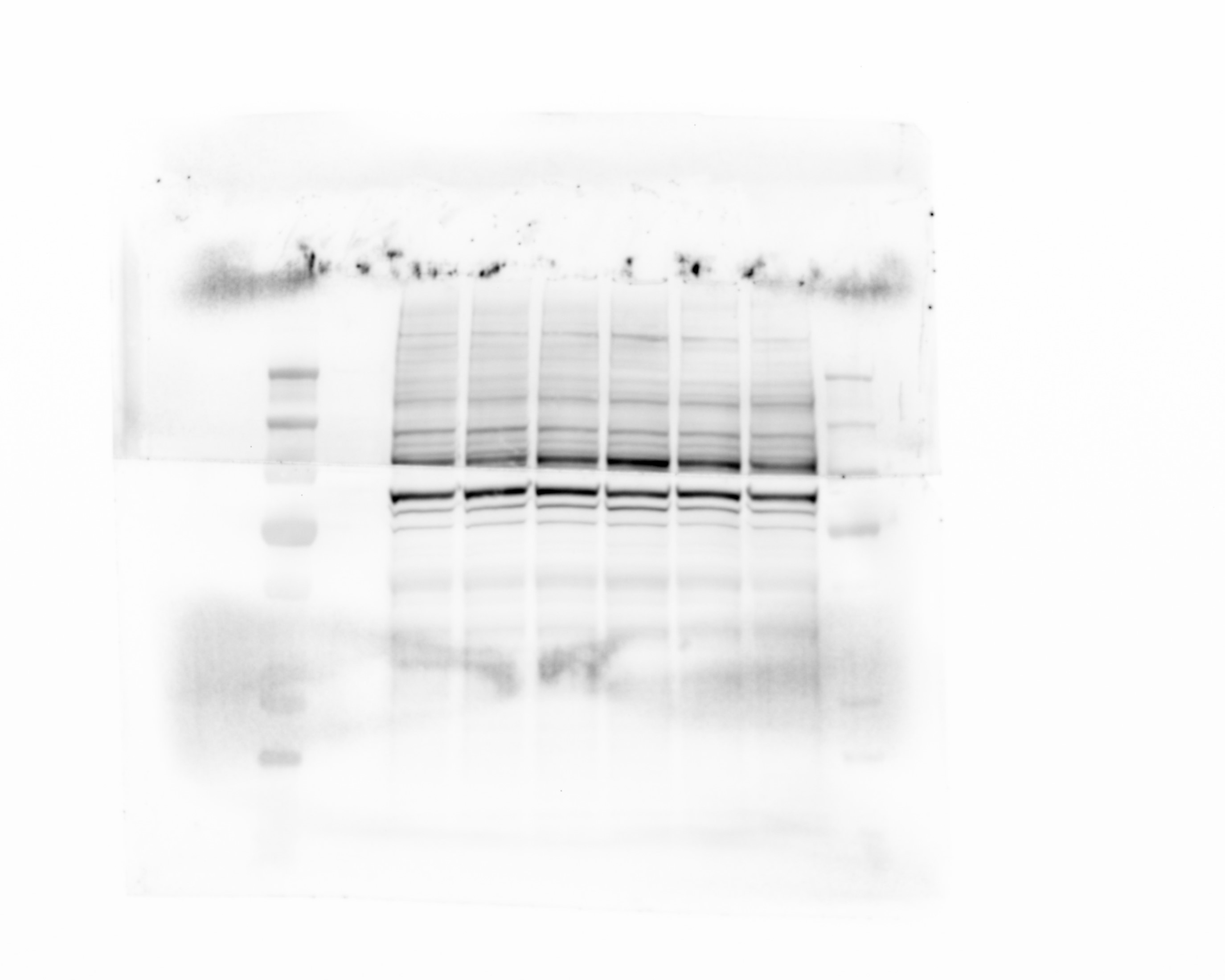 |
FH Rebecca (Verified Customer) (03-16-2022) | 10ug of protein was loaded. Transference at 4ºC and 90V, for 2h. Antibody incubation ON at 4ºC.
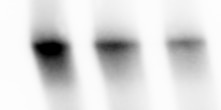 |
